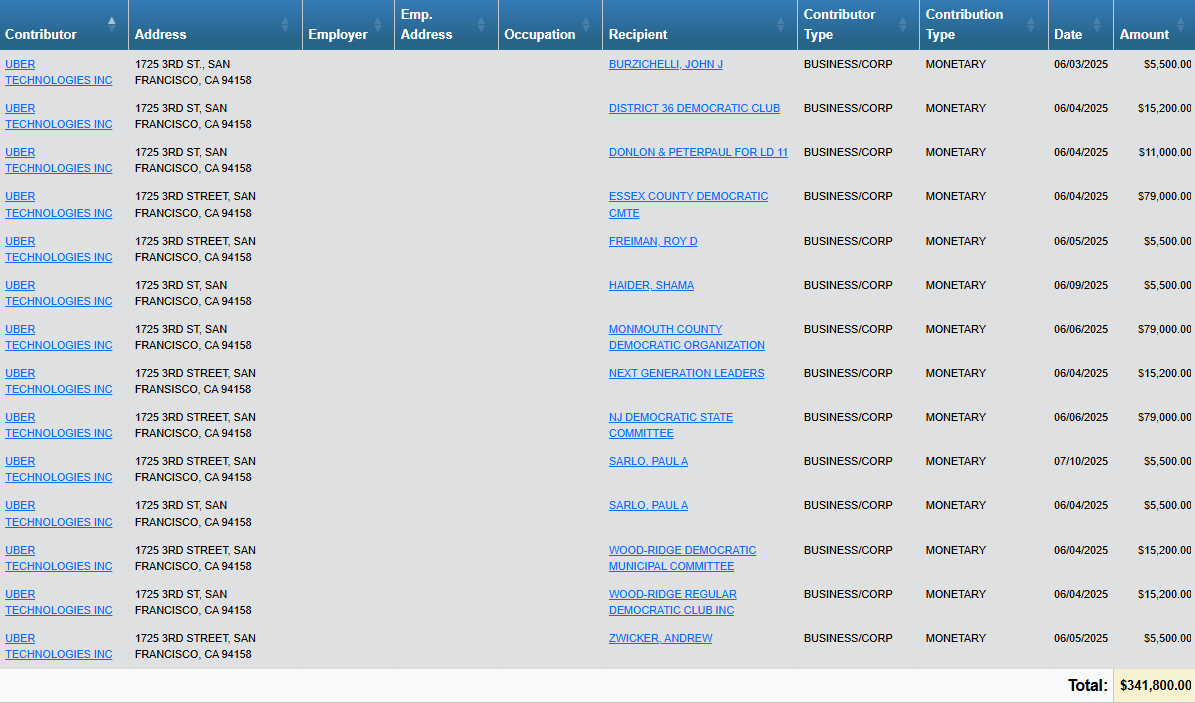Uber tries to tip scale for Democrats in NJ election
The rideshare company owned by Silicon Valley elites is going for broke in the final days of the election.
New Jersey Democrats have summoned the Silicon Valley elites in a last ditch effort to squeeze out a Democrat victory for Mikie Sherrill and her down ballot allies.
A total of $341,800 has been given to Democrats in the 2025 election cycle, with the Monmouth County Democratic Organization, the NJ State Democratic Committee, and the Essex County Democratic Committee netting a whopping $79,000 each. The Aberdeen Democratic Executive Committee was also the recipient of Uber’s influence to the tune of $15,200.
The New Jersey Globe reported in April 2025 that an Uber-backed PAC will spend over $1 million on the November election. Uber has previously committed $500,000 to Kitchen Table Conservatives, a PAC supporting republican Jack Ciattarelli, but has also sent the same amount to Stand Together NJ, and Sherill-aligned PAC, and has sent $1,000,000 to Workers for a Better New Jersey, a PAC that supported far-left Jersey City Mayor Steve Fulop.
Uber’s presence has become an invisible hand in the urban real estate equation: rarely building housing itself, but deeply influencing the conditions that determine where and for whom cities or soon-to-be cities are built. While this can be seen as traditional civic engagement, the tech giant could be quietly positioning itself to cash in on New Jersey’s next wave of housing mandate deals by influencing candidates.
Uber’s influence on large-scale development and affordable housing has been subtle but significant across the country—felt more through policy ripple effects than direct investment. While the company has occasionally partnered with community organizations like Habitat for Humanity or subsidized rides for residents in affordable housing complexes, its core business model has often intersected with urban development in more complex ways. City planners and researchers note that Uber’s expansion has reshaped transit patterns, reduced reliance on public transportation, and in some cases spurred gentrification pressures around high-demand corridors.
_________________________________
Want more CJN? Make sure to follow us on our respective social media platforms. If you’re interested in joining the team, have questions about advertising, or want to send hate mail, message us here on Substack.



